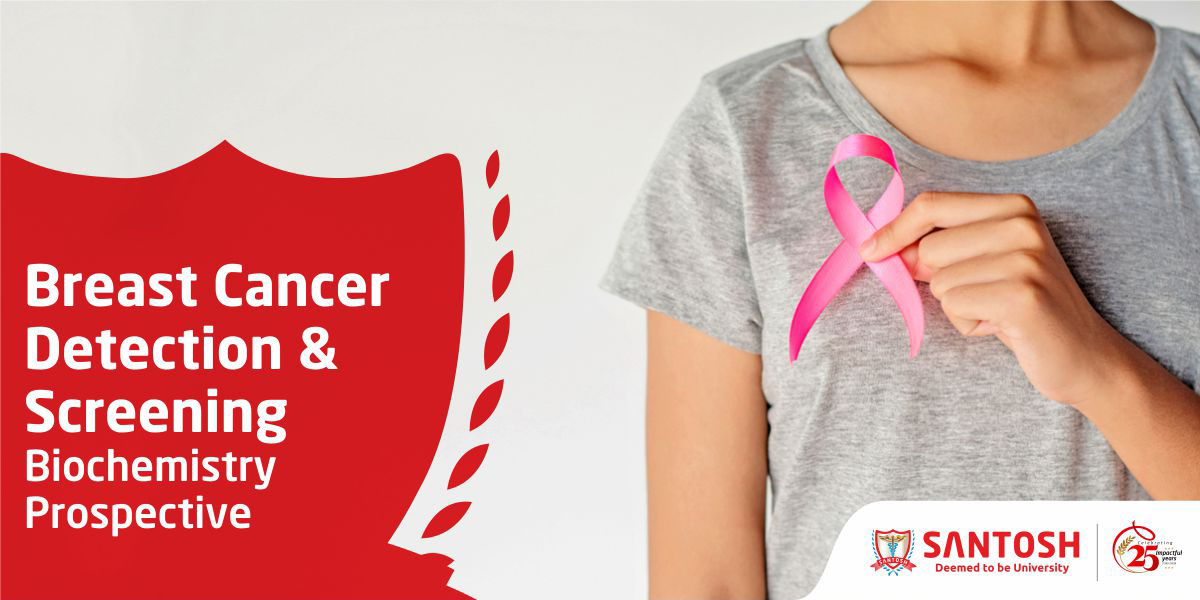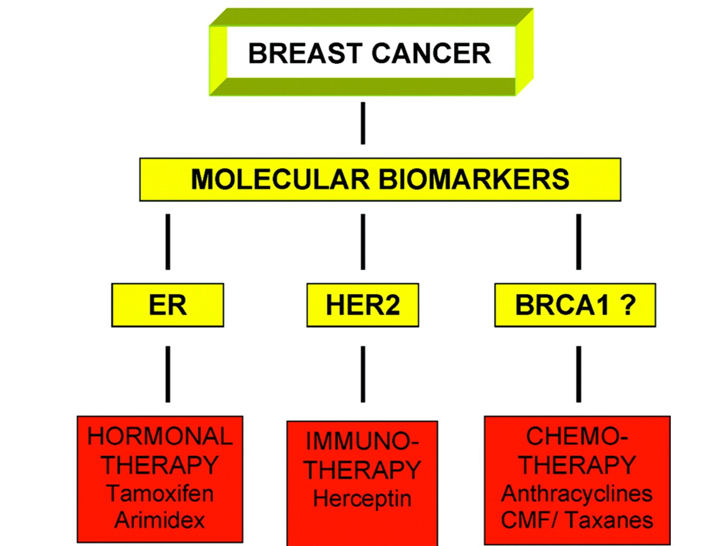
Breast cancer detection & screening: Biochemistry Prospective
Breast cancer is a public health problem as it is the second commonest cancer with increasing incidence (1 in 8 women aged 45-55) in the world. It is the second most common cause of death after lung cancer in the West. It is important to note that although over 90% of breast disease is benign, breast cancer is easily diagnosed as the suspicious lump is mostly discovered by the patient who calls the attention of the physician. The investigation of any breast abnormality must involve ‘triple assessment’-
Clinical examination-
Imaging-
Cytology-
Each of these diagnostic modalities complements the others, and together improves the diagnostic yield. None should thus be interpreted in isolation.
Screening for breast cancer in women aged 50-65 years enables the detection and treatment of cancers at an asymptomatic stage and the mortality can be reduced by a quarter. An important aspect of screening for breast cancer is biomarker testing, specifically the accurate assessment of the estrogen receptor (ER), progesterone receptor (PR), and Her2 status of a patient’s breast cancer. Biomarkers can be prognostic, predictive, or both. Prognostic biomarkers are independent measures of prognosis such that the presence or absence of the biomarker is associated with a patient’s overall clinical outcome (i.e., risk of recurrence and mortality). Predictive biomarkers, in contrast, predict whether or not a patient will respond to a given therapy. any factors influence the accuracy of detection of ER, PR, and Her2 in the laboratory. These include pre-analytical factors (including prompt fixation of appropriate duration), analytic factors (including utilization of validated procedures with ongoing proficiency testing), and post-analytic factors (including appropriate reporting). Importantly, the results of these tests alone are the key determinants of what treatment is selected. The goal is to provide the right treatment to the right patient.
For more info,visit: www.santosh.ac.in

